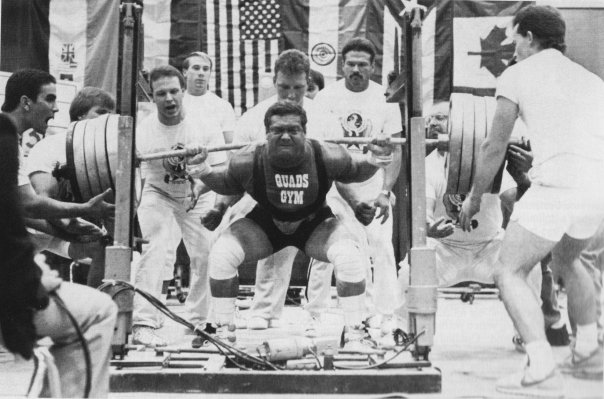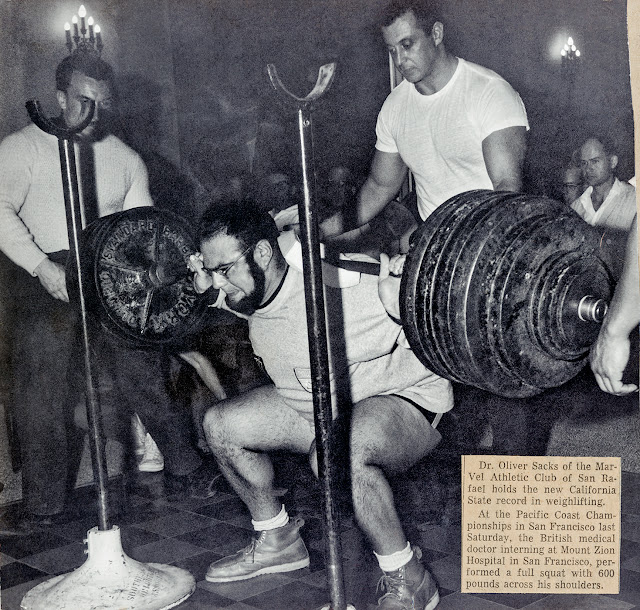Ed Coan
Doug Hepburn
"On the Move" by Oliver Sacks
When Oliver Sacks was twelve years old, a perceptive schoolmaster wrote in his report:
“Sacks will go far, if he does not go too far.”
Book:
http://www.oliversacks.com/books-by-oliver-sacks/on-the-move/
I believe the squat is the most beneficial exercise that you can do in the weight room. In our gym, the squat is trained seriously by only a few fellows, and not everyone wants a high squat poundage (say What?), but leg and back strength seems to come second to concentration curls and side bends. Leg work should, of course, be done by everyone.
To develop a good squat you don't have to do endless repetitions with a great number of exercises. All you have to do is squat twice a week, once heavy (10 sets, of which 15 of the reps should be fairly heavy), and once lighter (40 lbs. less than your best maximum, as well as doing more reps). Try to practice going deeper than parallel on your lighter day.
The heavy day should consist of doubles, triples, or singles. It is on this day that you should try to improve either the weight used or the reps. It is easier to improve the reps than the weight.
I like using fixed weights. For example:
- 3 to 5 warmups sets, reps not too high (more warmups are needed as you become a stronger squatter)
- 3 heavy work sets (3 singles or 3 deuces)
- 3 sets of 3 reps with the same weight. A 400 lb. squatter might use 335. A weight should be used that you can do for 5 reps and they will be heavy because of the 3 previous heavy sets.
Style, your technique, is almost as important as squatting twice a week. Some fellows have naturally good leverage in this lift. Something should be mentioned about body structure.
Short femur thigh bones with long tibia calf bones and medium spine lengths are perfect for heavy squats, while long thighs are definitely a disadvantage. For the lifter with short thighs it doesn't make too much difference where he places the bar on his back. Other lifters should place the bar as low as legally permitted on the back [rules as of 1979 are being referred to here]. This allows you to take advantage of hip and back drive which makes the big squat.
Squat stance is another factor to consider. A lifter with large hip bones should use a wide stance. For a narrow stance, the feet should be pointing straight ahead and the wider the stance, the more the toes should be pointing out. The thighs should go down in a line with the foot and no twist on the knee.
IT IS UP TO YOU TO FIND THE BEST STYLE SUITED TO YOUR STRUCTURE.
Some of you may wonder why working out three times a week wouldn't be beneficial. Well, with one workout heavy and done properly, even your light day feels poor! The legs, being some of the largest muscles in the body, don't recuperate that fast, IF YOU ARE WORKING HARD ENOUGH ON THE HEAVY DAY.
Assistance exercises are beneficial in working sticking points or bringing underdeveloped body parts of the leg up to par. Experiment and find what works for you!
Remember . . . drop a couple of exercises from your overworked shoulder and arm routines and add squats instead. And always, SQUAT WITH ENTHUSIASM!



